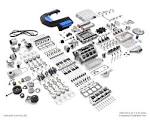 Read the Market Wizard books. These remarkable investors use proven off-the-shelf tools and indicators which they then assemble into whatever profitable methodology that they’re most comfortable with. What they don’t do is construct black boxes with proprietary indicators and complex algorithms and then proceed to make billions. Yet it takes years – even decades – for many ordinary investors to realize it’s not about secret tools or esoteric indicators still waiting to be discovered. It’s about the investors themselves.
Read the Market Wizard books. These remarkable investors use proven off-the-shelf tools and indicators which they then assemble into whatever profitable methodology that they’re most comfortable with. What they don’t do is construct black boxes with proprietary indicators and complex algorithms and then proceed to make billions. Yet it takes years – even decades – for many ordinary investors to realize it’s not about secret tools or esoteric indicators still waiting to be discovered. It’s about the investors themselves.
In auto racing, the cliché is bet on the driver, not the car. Contrast this to horse racing which is notoriously fickle. Why? Because in horse racing both sides of the equation are flesh and blood – that’s where the unpredictability lies. In F1 auto racing, you would likely win more times than not by betting on the top drivers. Since only one side of the equation is a living being, it is far less unpredictable than horse racing.
My point is that likewise in the investing arena, more energy needs to be spent by investors on keeping a trading journal and reading books that help them better understand themselves – the flesh and blood component in the equation. These are the high leverage activities that the Market Wizards have told us about for years.
A famous case in point is the wager that Richard Dennis made with his partner, William Eckhardt – both of whom were phenomenally successful, wealthy investors. Dennis believed that successful trading could be taught; Eckhardt held the opposite belief. To settle the debate, they recruited 21 men and two women. For two weeks in 1983, Dennis trained this group, known as the Turtles, in a simple trend-following system. After the training period, Dennis then gave each of the Turtles a trading account which they were allowed to trade for one month. At the month’s end, only a few of them were able to follow the trading rules he’d laid out, although all had been taught the same methodology with the same tools.
Those few traders who were able to stick to the emotional requirements that Dennis demanded each received $250,000 accounts of his own money. When the experiment ended five years later, these disciplined investors had booked an aggregate profit of $175,000,000.
Why did some Turtles achieve such wild success while others flamed out? I submit to you that it was not about mastering a set of proprietary tools and indicators. As Richard Dennis proved, successful investing is about avoiding esoteric indicators and embracing a personal basket of time-tested and proven tools. It is gaining mastery of your emotions and your “investor self” that separates average investors from extraordinary ones.
To paraphrase a favorite movie of mine – Bottle Shock: Claude Debussy used a standard piano; Monet used off-the-shelf paint; Rodin’s bronze was not a unique metal. But look at what they all achieved. It wasn’t about the medium – it was about the artist. Investors must embrace the belief that their financial masterpiece can be created with straight-forward off-the-shelf tools. It’s about the investor – it’s not about the tools. It’s always been that way.
Trade well; trade with discipline!
-- Gatis Roze
